Luxury Kenya Travel
Located in the south, the most established park in Kenya is the Masai Mara. Game viewing here is like no other; Sightings of lion prides, elephant herds, leopard cubs and the wildebeest migration (between August and November) are just examples of what to expect to see on a morning game drive.
A Kenya safari experience is particularly attractive because of the activities it offers. The Laikipa Plateau in central Kenya offers camel and horse riding, quad biking and tubing on the Ewaso Nyiro River. In the Lewa Conservancy, travelers can visit rhino sanctuaries, dog-tracking units, and other wildlife conservation programmes.
The capital Nairobi, is a hustling city which is usually the starting point, or end destination of a luxury Kenya tour. Although the city is predominantly a business hub, there are interesting visits to be made; For example, adopt a baby elephant at the David Sheldrick Wildlife Trust, or share a breakfast with giraffes at the famous Giraffe Hotel.
The Kenyan coast is also worth combining with your safari. An hour south of Mombasa lies Diani– arguably the country’s most beautiful beach. The coastline is formed of sparkling white sands, hugged by lush forests. For those looking for a more active stay, snorkeling, diving, and paddle boarding can be arranged. On the other hand, for those looking to sit back and enjoy the paradise coastline, do so with fresh seafood, delicious cocktails and wonderful service.
A safari in Kenya is truly a special experience. It is one of the most established destinations for a safari – in fact, travelers have been visiting Kenya for a safari in the continent for several decades. While there are over 54 national parks and reserves in Kenya, the destination that always sits at the top of the list is the Masai Mara National Reserve, and rightly so.
Sitting in the southwest of the country, the Masai Mara National Reserve is one of the most famous in all of Africa. At a size of around 1,500 km², it is certainly not the largest reserves in Africa (the Serengeti is 5 times bigger than the Mara) but this just makes it incredible dense with wildlife. Whether you are in the Mara Triangle, the Ololol Escarpment, or the Great Conservancies north of the reserve, the plains will be teaming with exceptional wildlife sightings.
During the months of July to October, you can see the wildebeest migration herds in Kenya which is a phenomenal sighting. If timed correctly, you may also get the chance to see a famous river crossing on the Mara River. This is a once-in-a-lifetime sighting, as over 1.5 million wildebeest and around 200,000 zebras make a dramatic attempt to cross the river. Crocodiles lurk in the waters and big cats wait for their opportunity to strike at the top of the riverbanks.
Although the Mara is truly special, there are many other destinations in Kenya that offer fantastic safari experiences. These include Amboseli National Park (famous for its iconic backdrop of Mount Kilimanjaro), Samburu National Reserve, Tsavo East, the Laikipia Plateau and Lewa. All of our itineraries are tailormade so we can combine multiple parks and destinations across the country for the ultimate Kenya safari.
Kenya has so many different destinations, featuring varying landscapes, wildlife and ultimately, experience. The most popular national parks and reserves for safaris are located in the central and southern parts of Kenya. These include the Masai Mara National Reserve which is regarded one of the best safari destinations in all of Africa.
For those who are focused on purely a safari experience, then combining parks like Amboseli, Samburu or Tsavo National Park are a good idea. Although you can combine these parks via road transfers, we would always advise taking a small light aircraft between them. It will save you a considerable amount of time and in itself, offers a unique scenic view from above. Flying over Kenya’s Rift Valley is truly special.
For returning travelers to Kenya, or for those looking to visit somewhere a little more unique and off the beaten track, have a look at destinations like the Laikipia Plateau. This is an expansive area in central Kenya, offering a diverse safari experience. Whilst there is wildlife to be seen (especially wild dog and elephant), it is much less dense than other safari areas like the Masai Mara. That said, you can enjoy walking safaris, horse rides, camel rides, fly camping and much more.
Kenya is also a fantastic destination to combine bush and beach. Twin-center holidays are becoming increasingly popular and with the southern coast of Kenya offering some of the most idyllic white-sand beaches on the continent, it is simply a must-do!
Kenya has more than 20 national parks, each offering incredible game viewing, guiding and an overall safari experience. Most of the national parks are in central or southern Kenya and we’ve included a handful of our most recommended destinations in Kenya.
Located in southern Kenya, the Masai Mara is one of the most iconic safari parks in all of Africa. The endless plains and vast savannahs entice thousands of tourists every year, and rightly so! The Masai Mara has some of the best game viewing opportunities on the continent, with abundant elephant, buffalo, giraffe, and antelope. Big cat populations are thriving so lion prides, cheetahs and leopards are regularly sighted. During the months of July to November, the wildebeest herds can be seen inside the reserve and outer conservancies which is an incredible spectacle.
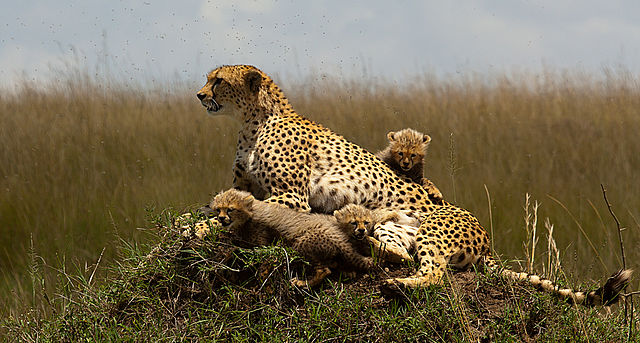
Amboseli National Park is often referred to as the the ‘Land of the Giants’ because of its huge elephant populations. This park is also home to some of the largest tusker elephants left on the continent. Along with good elephant sightings, there is an abundance of giraffe, zebra, lion, leopard and over 600 species of bird. The park has an incredible backdrop of Mount Kilimanjaro in Tanzania – in fact, this is one of the best viewpoints of Africa’s largest mountain. A safari here can be a stand-alone destination or in an itinerary combining the Masai Mara or Tsavo National Park.
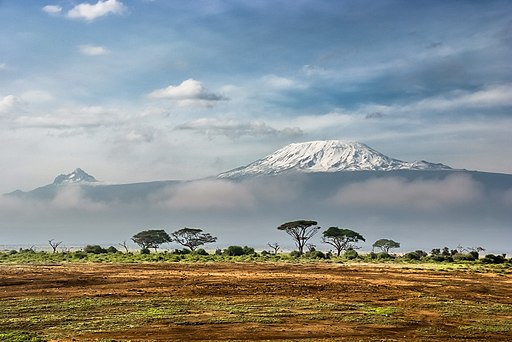
Located in the Kenyan Rift Valley, Samburu National Reserve is a park offering great safari experiences and opportunities to see rarer species. Samburu is famous for the Samburu Five which include rare northern specialist species – the Grevy Zebra, Somali Ostrich, Reticulated Giraffe, Gerenuk and the Beisa Oryx. Along with these rarer animals, travelers can expect to see elephant, lion, leopard, antelope, and sometimes wild dog. Samburu is a dry park with high temperatures so most of the game congregates around the Ewaso Nyiro River.
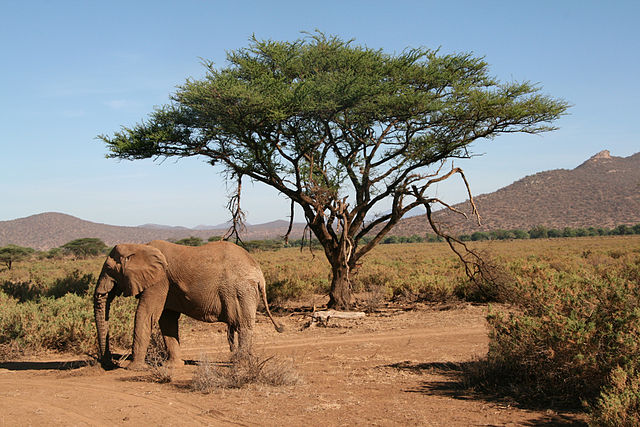
The Laikipia Plateau is an an expansive area of conservancies, ranches and rolling farmlands in central Kenya. The three main airstrips are Lewa, Nanyuki and Loisaba, so the park can easily be combined in a flying itinerary. Although the wildlife is not prolific or dense, especially compared to the plains of the Masai Mara, the Laikipia Plateau is all about expansive space, unique experiences and remote game-viewing. It is a great destination for active travelers or families traveling with children as the camps and lodges offer activities like tubing on the river Ewaso Nyiro, quad biking, night drives, camel riding and more. Arguably, the Laikipia Plateau has the most breathtaking views in all of Kenya, like this view from Loisaba Tented Camp.
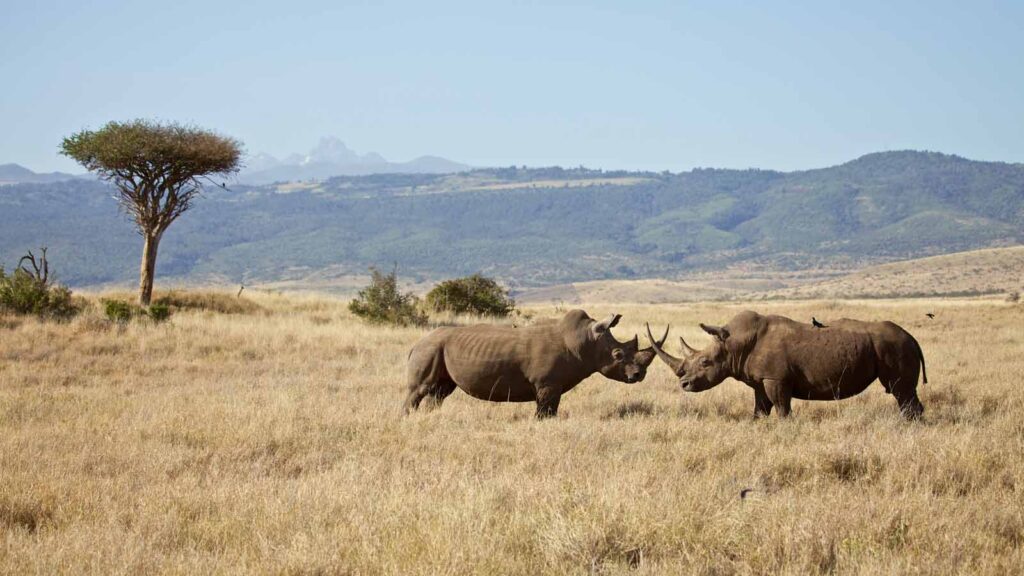
Kenya is fortunate to home some beautiful white-sand beaches and azure waters. Mombasa is the quintessential tropical port of the country, located on the eastern coastline. To the north and sound of Mombasa are stunning beaches – one of the most iconic is Diani Beach. With glistening sands hugged by lush forests, Diani Beach is somewhere for everyone – families, honeymooners and water-sports enthusiasts to name a few. It is very straight forward to combine a Kenya safari with the coast, involving a short flight from the bush airstrip to Mombasa. This is the perfect R&R after your exhilarating safari.
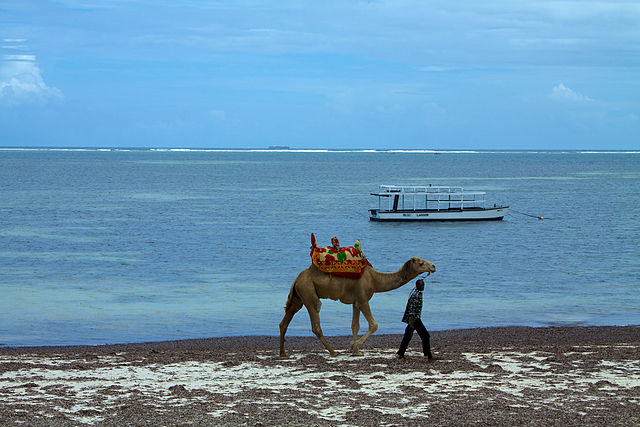
The capital of Kenya, Nairobi, is where a safari itinerary will inevitably start or finish. That said, there is more to do than just check in and out of a hotel. The hustle-and-bustle can be intriguing to many travelers and some activities are not to be missed. The David Sheldrick Wildlife Trust operates the most successful orphan elephant rescue and rehabilitation program in the world, and is a must-do. Other places to visit include the Giraffe Center, and the Karen Blixen museum. For those looking for a ‘wow-factor’ to start your trip with, we would recommend staying in Giraffe Manor which was has been titled as one of the most incredible hotels in the world. Although it is very popular (you need to book 9-12 months in advance), it is such a memorable experience as you get to have breakfast with the giraffes.
There is so much more to a camp, lodge or hotel than a good night’s sleep. Of course, that’s essential, but the facilities, location, service and general ambience all play a huge part in your Kenya safari experience.
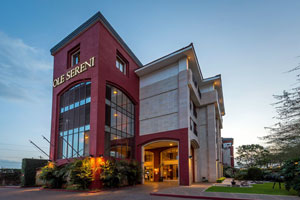
This deluxe hotel is located near Nairobi National Park.
Hotel Details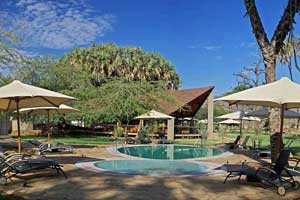
This first class camp is located within the Buffalo Springs Game Reserve and overlooks the plains and Ewaso Nyiro River.
Hotel Details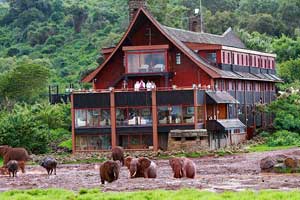
This first class hotel is located in Aberdare National Park.
Hotel Details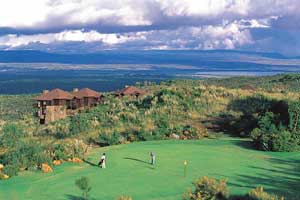
This first class hotel overlooks Lake Naivasha.
Hotel Details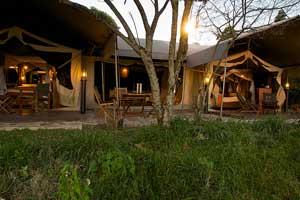
This first class hotel is located in a lovely location overlooking the Talek River.
On safari, there are various types of accommodation to choose from. Luxury tented camps are a style of canvas tent that are popular on safari. This is because of their authentic accommodation offered, and the connection you have to the wilderness. Some tented camps even have mesh-covered tops to the tents which allow you to stargaze in bed. In these tented camps, you can also hear sounds of the bush which makes it extremely exciting.
Although the name ‘tented camp’ sounds quite basic, these camps are extremely luxurious. All of the tented camps have ensuite and well-appointed bathrooms, some with free-standing baths or copper baths under the stars! Others can have private butlers, minibars, breakfast-in-bed services and chandeliers.
The other type of accommodation you can stay in on safari, as well as during your time in Nairobi and the beach, is larger lodges or hotels. On safari, while the larger hotels have more facilities (like a swimming pool, air conditioning, spas), the service tends to be less personal. That said, these are often more attractive to families with younger children, or to travellers who may be nervous about the tented camp experience.
On the Kenyan coast, the southern beaches like Watamu and Diani are great places to stay after your safari. There are a mix of hotels here – from smaller boutique hotels to larger, chain-like hotels. We can advise on the best places to stay in Kenya to suit your trip, requirements and preferences. Image: Angama Mara
Kenya is home to over 35,000 elephants, 1,130 bird species and 1.5 million wildebeest, a safari is definitely the most popular thing to do in Kenya. Nothing quite beats a morning on safari – heading out to the game-filled plains before sunrise, watching elephant herds wander down to the riverbanks, and following dusty footprints of killer cats. Every game drive is unique, and the beauty of a safari is that no day is ever the same.
There are various safari activities you do can in Kenya. Of course, the classic game drive can be enjoyed in all the national parks across the country. The safari jeep will most likely be open-sided which allows you to feel closer to the wildlife. Each day on safari, you will have two game drives – one early morning and one late afternoon. The reason for this is that, during the hottest part of the day, it is unproductive to be out on safari as all of the animals are hiding under bushes, avoiding the sun.
Other safari activities include bush walks, night drives, camel safaris and horse-riding. The Laikipia Plateau is an area in central Kenya that is renowned for its exceptional variety of safari activities. Here, you can do all the safari activities, as well as visiting canine anti-poaching units, go fly camping, enjoy tubing on the Ewaso Ng’iro River, and even take helicopter rides over the expansive landscape.
Other things to do in Kenya include visits to the rhino sanctuary (Ol Pejeta Conservancy is home to the last two northern white rhinos in the world), visit local tribes like the Maasai or the Samburu people, enjoy birdwatching in the lakes across central Kenya and the rift valley, and relax on the white-sand beaches in the southern coast of Kenya.
Below you’ll find a sample of guided tours and activities we offer across Japan. This is just the tip of the iceberg: using our first-hand experience and extensive local contacts we can cater for all manner of interests. Let us know what intrigues you most about Japan, and we’ll map out the perfect itinerary.
The Masai Mara is arguably the best wildlife destination in Kenya. The Masai Mara is home to an exceptional amount of resident wildlife, including elephant, lion, leopard, cheetah, hyena, buffalo, giraffe and many more. On top of that, if you visit the Masai Mara between the months of July and November, you will get to see the famous wildebeest migration – an annual pilgrimage of over 1.5 million wildebeest!

There are only two northern white rhinos left in the world! These are two female rhinos, named Najin and Fatu, who are protected and monitored 24 hours a day by dedicated rangers and caretakers in the Ol Pejeta Conservancy. Because of the species’ vulnerability, visiting the rhinos is one of the most popular things to do in Kenya. We would highly recommend it.

The Laikipia Plateau is located in central Kenya and is famous for its adventure activities offered. For families, it is a great destination to include in an itinerary as you can do tubing on the Ewaso Nyiro River, horse riding, camel riding, bush walks, quad bike safaris, mountain biking, helicopter rides, and fly camping. The accommodation varies from simple tented camps to luxury lodges around the plains.

Kenya’s southern coast is a haven of tropical paradise, and for those who are looking for a twin-center holiday, it is a great option for the beach part. Although there are beautiful spots across all of the Kenyan coastline, the beaches in the Watamu and Diani Beach regions are idyllic. In fact, we would say that Diani beach is one of the most beautiful beaches in all of Africa. But don’t just take our word for it – it has won the World Travel Award as Africa’s leading beach destination in 2019. There are a handful of fantastic hotels, boutique hotels and lodges to choose from along the Watamu and Diani Beach. Some of these include Afrochic, Alfajiri Villas, Hemingways Watamu and Kinondo Kwetu to name a few. The Indian Ocean is bright blue and inviting, and you can do a range of watersports here, including snorkelling, diving, kite surfing or heading out on a local dhow to enjoy the sunset.
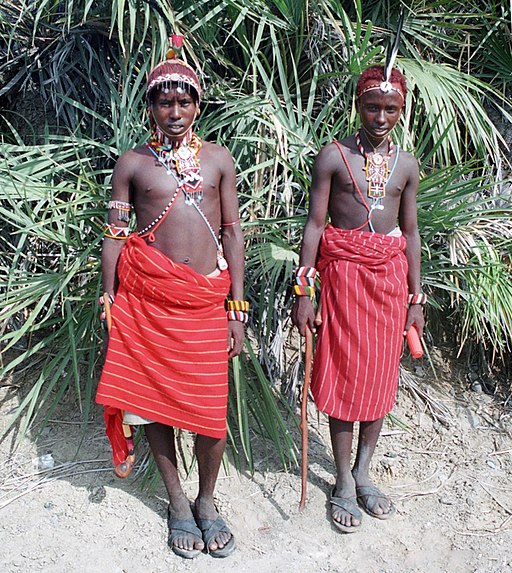
The Samburu people are a semi-nomadic tribe who live in north and central Kenya including the Samburu county. The Samburu tend to their livestock every day, herding cattle, goats and sheep across a vast distance in search of fresh pasture. They also rely on their livestock for their diet, as they drink milk and blood from the cows. With this in mind, they are cousins of the Maasai people who live in southern Kenya and northern Tanzania. They are however, both very easily identifiable. The Maasai people usually have chequered clothing and shawls (red or blue). The Samburu people are very colorful in their appearance, and wear beaded earrings, bracelets and necklaces. The amount of jewellery worn represents the wealth of the Samburu warrior. There are many interesting traditions and ceremonies that are important to the Samburu people and it’s always worth visiting a tribe or village if you can. If you are visiting the Samburu National Reserve then it is likely that members of the staff in camp will be Samburu people, or come from nearby communities.
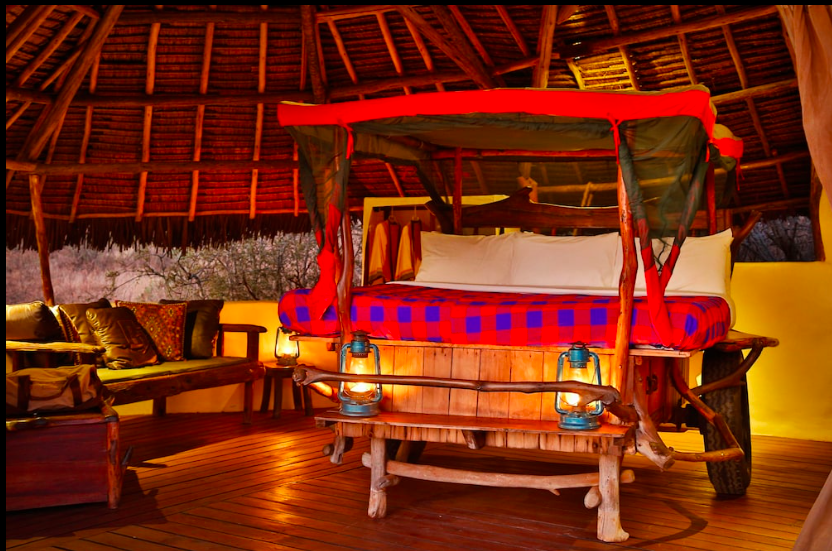
While much of the game viewing is done in the daylight, a night under the African sky should not be underestimated. With little to no light pollution, stargazing in Kenya is often people come home raving about. Although you can see the stars from the campfire at dinner, or walking back to your tent at night, how about sleeping in a bed that allows you to stargaze all night? In the Laikipia Plateau, there are plenty of options that facilitate this. Loisaba Starbeds is probably one of the most iconic properties to do this as, as the name suggests, offers you a bed under the stars. The camp is made up of just four rooms, each with its own private wooden veranda. At night, your four-poster bed is wheeled out onto the veranda for you to sleep under the stars. Of course, the bathroom facilities are nearby and you have a mosquito net around the bed but you are essentially stargazing all night. Other properties offering stargazing experiences in the Laikipia Plateau include Sabuk Lodge and Segera Retreat’s Bird Nest room to name a couple.
For Kenya, and most of East Africa, this is the best period to go on safari because of the dry conditions, warm weather and generally fantastic game viewing. This is a great time to visit the Masai Mara National Reserve and its greater conservancies in southern Kenya. During this period, you can see the huge numbers of resident wildlife – with elephant, hippo, leopard, crocodile, lion and giraffe aplenty, among many others. This is also the best time of year to see the Great Migration which is a pilgrimage of over 1.5 million wildebeest, accompanied by 200,000 zebra and a host of gazelle. Although it differs every year (based on rain patterns), the migration herds cross the Mara River from the Serengeti in Tanzania into the Masai Mara in Kenya. They graze the plains of the reserve and the conservancies until around October time when they head back to Tanzania.
The short rains during this period usually arrive mid-November and last a few weeks. Unlike the heavy rains in April and May, these short rains are usually sporadic and only last a couple of hours every day. Heavy downpours usually arrive later in the afternoon which great dramatic landscapes, especially with the animals in the foreground. In terms of game viewing, it’s still a good time of year to go but it’s worth noting that the vegetation will be thicker and denser as a result of the rains. The parks become greener, which can make it harder to see the wildlife. By mid-December, the rains have usually stopped, and the weather is warm and comfortable. For those looking to go away at Christmas, a twin-center safari and beach trip works well but, as one of the busiest times of year, make sure you book the trip in advance.
This is another good time of year to visit Kenya. Generally, this period is the hottest time of year as it is between the two rainy periods. Humidity increases closer to the rains in April so mid-March onwards is usually very hot and, for those in tented camps without air conditioning, it may be uncomfortable for some. This period offers some of the best birding in Kenya as migratory birds head to East Africa from Europe and northern Africa. For those heading to the beach, southern Kenya like Watamu and Diani offer a range of beautiful accommodation with beach access and ocean views to add on either after or before your safari.
This is the rainy period in East Africa which is generally avoided. A majority of the camps and lodges close during this period, the internal airlines reduce their flight schedules, and it gives the local safari guides and staff a well-deserved rest from tourism. That said, there are still some safari camps that remain open and interestingly, this is a unique time to go if you are a professional or amateur photographer. With very few vehicles in sight, photographs capture the dramatic scenes of the storms, along with the iconic wildlife that is unfazed by the rains.
Although the Masai Mara National Reserve tends to get most of the attention when it comes to a Kenya safari, there is so much more to explore, see, do and enjoy in Kenya. Our Africa Specialists are the best people to talk to when it comes to finding out about Kenya as they have both lived in and travelled around the country extensively. That said, for those who would like to dive into reading up about Kenya, its people and its experiences, we have created a hub of travel guides for you.
With some of the best wildlife sightings in the world, you will have probably seen Kenya featured on wildlife documentaries and shows. Although very dated now, the Masai Mara became famous after the launch of the BBC’s Big Cat Diaries in 1996. This series documented updates, challenges and successes of big cat families in the Masai Mara, including cheetah, lion and leopard. The series was filmed in the Mara Triangle, just outside of Little Governors Camp. This is one of the reasons this camp is so popular, as well as its fantastic guiding and overall authentic safari accommodation.
Although the Masai Mara National Reserve tends to get most of the attention when it comes to a Kenya safari, there is so much more to explore, see, do and enjoy in Kenya. Our Africa Specialists are the best people to talk to when it comes to finding out about Kenya as they have both lived in and travelled around the country extensively. That said, for those who would like to dive into reading up about Kenya, its people and its experiences, we have created a hub of travel guides for you.
With some of the best wildlife sightings in the world, you will have probably seen Kenya featured on wildlife documentaries and shows. Although very dated now, the Masai Mara became famous after the launch of the BBC’s Big Cat Diaries in 1996. This series documented updates, challenges and successes of big cat families in the Masai Mara, including cheetah, lion and leopard. The series was filmed in the Mara Triangle, just outside of Little Governors Camp. This is one of the reasons this camp is so popular, as well as its fantastic guiding and overall authentic safari accommodation.

S. Srinivasan
+91 8610779636
Talk to our expert for further enquiry about tour and destination packages. We are here to help you 24/7 and recommend you budget packages.
